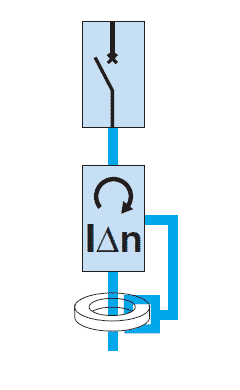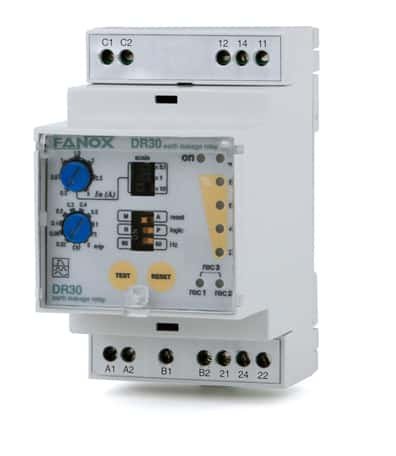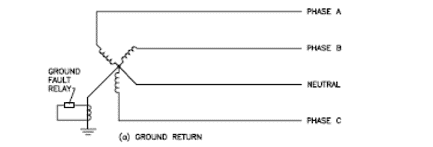Earth fault is an undesirable condition at which current flow from a conductor to earth. This can happen when a current-carrying conductor falls on the ground or the body of any equipment or when someone touches a live conductor with adequate PPE or due to insulation failures.
Earth leakage relay and earth fault relays are used to sense earth faults. The difference between them lies at the magnitude of current they sense and the purpose of usage.
Earth leakage relay vs Earth Fault relay
Earth Leakage relay

Earth leakage relays are used to sense small magnitude of currents. Earth leakage relays are normally used in low voltage circuits only. These relays are designed in such a way that whenever they sense a preset value of current (usually settable between 10mA and 3A) it trips the circuit breaker and interrupts the flow of current. It is normally used in combination with CBCT (Core balance circuit breaker). Phase and neutral conductors go through the CBCT to the load. Any leakage to the earth causes an imbalance between the phase and neutral currents. Earth fault relay senses this current and trips the circuit breaker. Earth leakage relays can be found in domestic distribution boards and are used to sense insulation failures and to prevent electric shocks.

Earth Fault relays

Earth fault relays are used in high and medium voltage systems and in transformers. These relays are capable of sensing greater fault currents. In case of phase to ground faults, high currents flow to the grounded neutral of the transformer. Earth fault relay senses these faults. Usually, the contacts of the earth fault relay are connected to the trip circuit of circuit breakers at the output side of the transformer. Hence on the detection of a fault, earth fault relay trips the circuit breaker.
hello i wanted to know how to size an earth leakage relay
Can I know is there any device that can detect earth fault and earth leakage together?
Residual current devices can detect earth faults as well as earth leakages.
Hello,
I have a simple question.
What will happen if the ELR faulty?
Will faulty ELR cause the MCCB to trip?